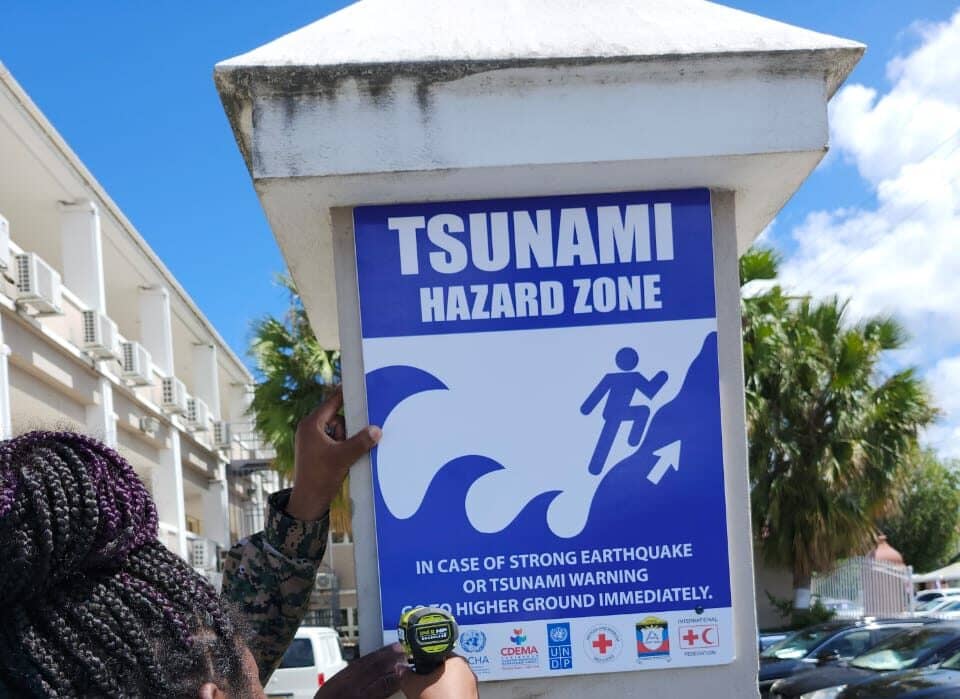
When the Tide Turns: Tsunami Risks and Agricultural Resilience in Antigua and Barbuda
By Brent Simon
Every November 5th, on World Tsunami Awareness Day, the world is reminded that beneath seemingly placid oceans lies the potential for sudden, devastating change. For the twin-island state of Antigua and Barbuda, surrounded by the life-giving sea yet facing latent geological threats, the message is especially pertinent.
A tsunami isn’t just “a big wave.” It’s a massive transfer of energy—often triggered when the seafloor shifts, volcanic material collapses into the sea, or underwater landslides occur—displacing vast quantities of water and radiating outward at high speed. The key tectonic features relevant for our region include the Puerto Rico Trench and the Lesser Antilles subduction zone, where the North American Plate slides beneath the Caribbean Plate. These zones are capable of generating tsunamis that could reach Antigua and Barbuda in a matter of minutes to an hour.
While historical records in our immediate locale are limited, there is clear evidence of seismic activity in the broader region—and what appears to be an uptick in tremors in recent months. In late October 2025, for example, Antigua and Barbuda experienced about 20 earthquakes in one week, including a magnitude 5.2 event felt across multiple communities. The region’s seismic agency has recently updated its alert system in recognition of this increased activity.
That doesn’t mean a tsunami is imminent—but it means we should stop treating them like mythical possibilities and start treating them like the real risk they are.
Agriculture and the Coastal Frontier
In Antigua and Barbuda, agriculture occupies a narrow margin between land and sea. Many productive farms lie on low-lying coastal plains—areas such as Bethesda, Parham and the northern fringes of Barbuda—where even moderate wave surges or flooding would challenge production.
What are the key risks to agriculture from a tsunami event?
Saltwater intrusion.
A tsunami surge carrying seawater inland deposits sodium and chloride ions into soil and groundwater. These ions interfere with plant water uptake, alter soil structure by dispersing clay particles, and can inhibit germination and root growth for months to years. Crops like lettuce, tomatoes, okra are particularly salt-sensitive. Even more robust crops—cassava, coconut, sugar apple—can suffer if salt levels remain high.
Physical destruction of assets.
Beyond soil chemistry, the immediate force of water can uproot plants, destroy greenhouses, saturate fields for prolonged periods, and wash away nutrient-rich topsoil. For livestock and poultry operations near the coast, the risk isn’t just flooding—but contamination of feed, destruction of shelters, and loss of grazing or yard space.
Disruption of inputs and supply chains.
Agricultural systems in the islands rely on imports (fertilisers, seed, equipment) and coastal facilities (storage, packaging, cold-rooms). A tsunami poses not just the wave hazard but the knock-on disruptions—ports damaged, roads blocked, power out. Agriculture becomes a secondary casualty of a broader coastal disaster.
The Stakes for Food Security
The agricultural sector in Antigua and Barbuda matters not just for exports—but for national food security, livelihoods, and resilience. In the event a tsunami strikes:
- Crop production in the affected zone could fall for one or more seasons.
- Replanting could be delayed by contaminated soils, unavailable inputs, damaged infrastructure.
- Farmers may abandon coastal plots, shifting land use inland—but with density, competition, and possibly less fertile soils.
- Imported food could absorb the gap—but at higher cost, adding to national food-import bills and household pressures.
Since tourism and fisheries also cluster around the coast, a tsunami could hit multiple livelihood sectors simultaneously—agriculture, fishery, tourism—magnifying the economic shock.
Preparing for the Inevitable
We can’t stop tectonic plates from shifting—but we can prepare intelligently. Here are concrete steps particularly relevant for the agricultural sector:
Risk mapping for agriculture. Identify farms within tsunami-walk zones (coastal elevation, distance from shore). Prioritise these for protective actions or planning alternative locations.
Salt remediation plans. For farms exposed to seawater intrusion: flush soils where possible, plant salt-tolerant cover crops, employ soil amendments (gypsum, organic matter) to help reset soil structure.
Inland production hubs. Consider establishing nurseries, seed banks, or protected cultivation units further inland, where tsunami risk is minimal—but still accessible for local supply.
Infrastructure resilience. Agricultural storage, cold-rooms, irrigation systems should be designed or retrofitted with coastal hazard in mind (e.g., elevated, protected against inundation, with backup power).
Natural buffers. Restoration of mangroves, coastal wetlands and dune systems acts as “living infrastructure”—reducing wave energy, filtering saltwater, protecting inland soils.
Early-warning and evacuation planning. The region now has better seismic monitoring and tsunami warning capability. The agricultural sector must integrate these systems: move livestock, secure equipment, unplug refrigeration when alerted.
Training and awareness. Farmers, extension officers and value-chain actors must understand that tsunamis are not just “rare events” but part of the hazard landscape. Frequent tremors in recent months are a signal, not a guarantee—but they call for caution.
Turning Awareness Into Action
As the sea rises, storms intensify and tectonic stress accumulates, tsunamis may no longer belong only in old history books—they belong in our agricultural risk assessments. For Antigua and Barbuda, the task is clear: blend scientific foresight with agricultural innovation and coastal commonsense.
Awareness is not fear—it’s foresight. And on this World Tsunami Awareness Day, the call is to turn that foresight into resilient action before the tide turns.
Advertise with the mоѕt vіѕіtеd nеwѕ ѕіtе іn Antigua!
We offer fully customizable and flexible digital marketing packages.
Contact us at [email protected]

















